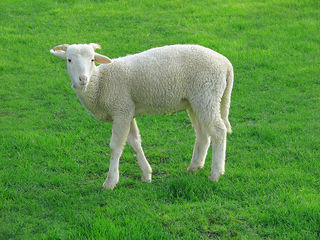Neuroscience
A Coincidence of Lambs
Two images, worlds apart, create a striking coincidence.
Posted March 27, 2018

A dear friend and psychiatric colleague, Ran Weingarten, eloquently told me this striking coincidence. His mind is symbolically rich. Little wonder that he would find a symbolically rich synchronicity.
"So much of our lives is entangled with people and events we rarely know or realize. A few weeks ago, I was wondering if Jean Paul Sartre, the existential philosopher, knew Pablo Picasso, the renowned artist, during their time in Paris during the German occupation of France in WW2.
Years ago I had attended an exhibit at the Museum of Modern Art in San Francisco,"Picasso and the War Years’. It was both beautiful and grotesque. I bought the catalog of reproductions. I had not looked at it in many years and looked at it again. To my surprise, Picasso had written a play during that period. Both Simon De Beauvoir and JP Sartre had been actors in its brief performance in Picasso’s studio in this way answering my question about their association during the German occupation.
An image in the catalog had a haunting quality: the painting of a young man holding a lamb at his side.
Several days later, I attended a talk by an eminent photographer, Ed Kashi. In his work, he combines social and ecological activism with a deep respect for the humanity of his subjects. Many of his images are published in National Geographic Magazine. During his talk, I gasped when he showed a photograph of a Nigerian youth standing in front of a mound of bones, holding a dead lamb over his head. This young boy had been forced to work in a slaughterhouse, the consequence of a heartless, political culture.
These two, haunting images resonate on several levels simultaneously: their sheer coincidence; their arising out of deeply troubled, historical times; and the ways in which both echo the torment and turmoil of our world today.
I conceive of the lamb in both the painter’s depiction and the photographer’s as an emblem of innocence, tenderness, and possibility, although ravaged by war and callous, evil indifference. The youth holds the promise of the ’Way of what is to come’, a declaration of all that is and can be, as long as we preserve the conditions of life.
And the coincidence factor: a realization of how entangled we all are—actually, symbolically, aesthetically, intellectually. Whatever the nature of our respective nervous systems, (20 billion neurons; 20 trillion synapses) and the vast differences (genotypically, phenotypically) of our ways of being human, we exist in an even larger nervous system, a neural atmosphere that can connect the interconnections at light speed.
Coincidences are simply a way of realizing that the connections are happening without our trying to make them happen."


